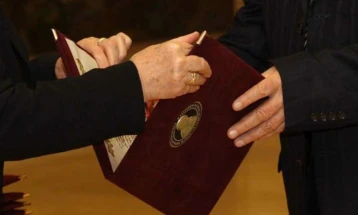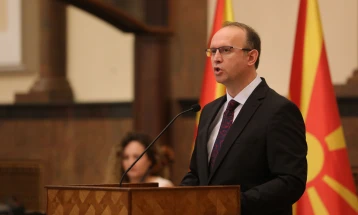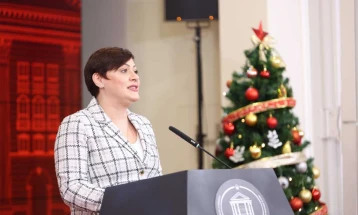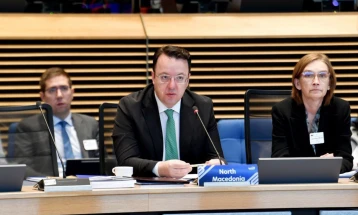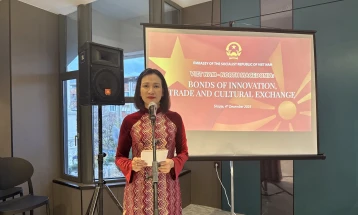Media literacy in education teaches students to successfully manage information: conference
- Media literacy is included in formal primary education as a separate topic in Macedonian, Albanian, Turkish, Serbian, and Bosnian native language curricula, and is integrated in topics and areas in other subjects as well, such as free and elective courses.

Skopje, 30 October 2024 (MIA) - Media literacy is included in formal primary education as a separate topic in Macedonian, Albanian, Turkish, Serbian, and Bosnian native language curricula, and is integrated in topics and areas in other subjects as well, such as free and elective courses.
Its implementation began in 2021 as part of USAID's media literacy YouThink project implemented by IREX and partners- the Macedonian Institute for Media (MIM), Institute of Communication Studies (ICS), and Youth Education Forum, in cooperation with the Ministry of Education and Science, Education Development Bureau, State Examination Center, universities, and youth clubs.
Trainings for primary school teachers and handbooks for implementation of media literacy content were also organized. Electronic versions of the handbooks for each grade are available at MIM and Education Development Bureau's websites. Printed versions of the textbooks from first to fifth grade are already available, and those from sixth to ninth grade are yet to be printed. The project is expected to extend to secondary education.
As part of the project, MIM and IREX organized a national conference on Wednesday entitled "Media Literacy in Education." Minister of Education and Science Vesna Janevsa told media that results from the project are important for society, and thanked the US Embassy and USAID. She stressed that media literacy is a "powerful tool in the fight against fake news, manipulation, prejudice, and certain attitudes," which nowadays poses a serious threat in young people's development, especially with the rise of artificial intelligence.

"With support from the Education Ministry, media literacy has become an integral part of the primary school curricula and we plan to extend the project to secondary education. I sincerely hope that this project will continue to produce excellent results. Through this project students acquire skills to critically analyze content from various sources, adequately understand context, make connections with other information, and assess its quality; as a result, they can make independent decisions and judgments based on facts; which is an important for the development of a young person," Janevska stressed.
USAID Country Representative for the Republic of North Macedonia, Jeri Dible, said that media literacy is not just a skill, but the foundation of society to distinguish between facts and fiction.
"It is the strength of our democracy because it depends on young people successfully managing information. They are the architects of our future. Today, we are exposed to disinformation or fake information that undermines trust in institutions and erodes democratic values. USAID helps achieve higher media literacy skills that encourage critical and collaborative thinking," Dible noted.
Ayshe Ajrulai from the Education Development Bureau highlighted the progress of implementing media literacy in primary education and teachers' competences after trainings.
"We believe that it is important for media literacy to be included in the education system as a separate subject, and in the Framework for introducing media literacy in primacy education there is opportunity for the development of separate free or elective courses for fourth through ninth grade. We believe that these curricula will contribute to the development of attitudes and beliefs among young generations," Ajrulai said.
MIM's Vesna Nikodinoska presented activities undertaken to develop USAID's project. In addition to handbooks for teachers, which are available online for all grades, and printed versions from first to fifth grade, MIM prepared learning materials for seventh grade with lesions on media literacy.

In order for students to learn the basics of journalism and create journalistic content, through cooperation between MIM and schools, 80 media clubs have been formed throughout the country in two years, whose members also took part in visits to media outlets. At the end of the year, MIM also announced a competition for the best media product.
“Last year we saw a lot of enthusiasm and creativity in the students. More than 700 students from primary and secondary schools took part in the clubs, producing more than a thousand media products,” Nikodinoska explained.
She added that online educational videos for students and teachers that have been shown for several weeks on MRTV and MIM social media are very effective and have a high view count. The aim, said Nikodinoska, is for them to reach a wider audience because they touch on topics related to media literacy in an interesting way. ssh/sk/
Photo: MIA

